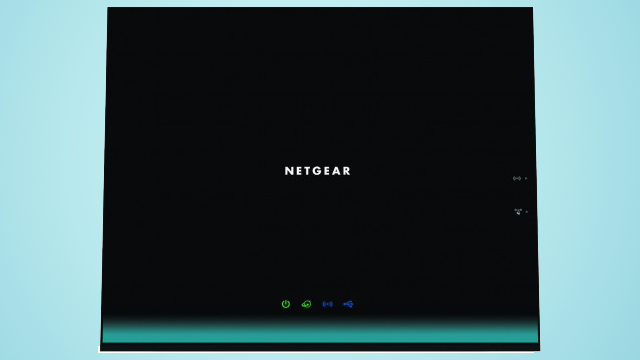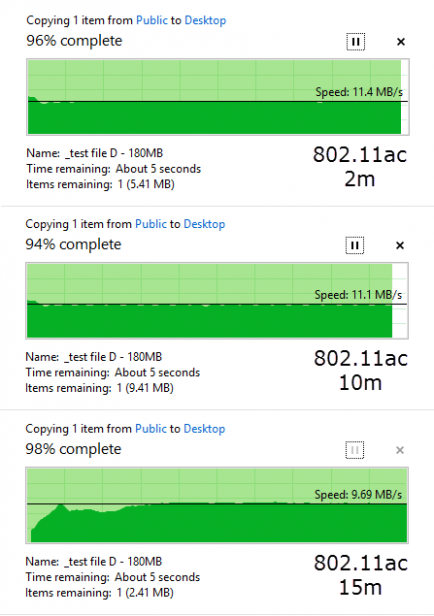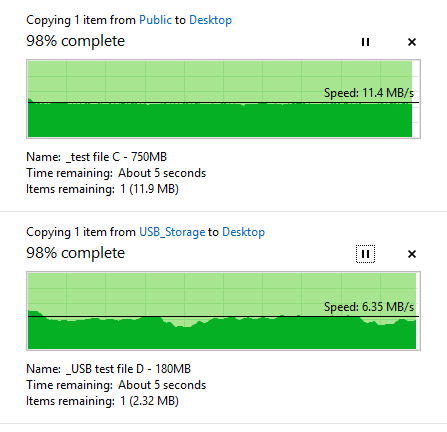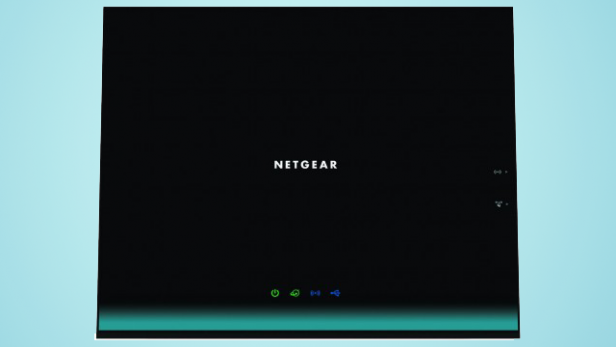Netgear R6100 Review - Performance, Value & Verdict Review
Performance, Value & Verdict
Netgear's cheapest 802.11ac router tested

Sections
- Page 1 Netgear R6100 Review
- Page 2 Performance, Value & Verdict Review
Netgear R6100 – Performance
 So what happens when you clip the heels of 802.11ac WiFi by fitting Fast Ethernet? Something entirely predictable: you restrict maximum performance to that of Fast Ethernet.
So what happens when you clip the heels of 802.11ac WiFi by fitting Fast Ethernet? Something entirely predictable: you restrict maximum performance to that of Fast Ethernet.
As such this makes a mockery of peak performance testing. At our test distances of 2m and 10m line of sight both 802.11ac and 802.11n 5GHz hit 11.xMBps (circa 90Mbps) which is within the margin of error for the limits of Fast Ethernet. Given the R6100’s aged 802.11ac 2.4GHz standard hit just over 10MBps (80Mbps) at these two distances it shows how badly Fast Ethernet restricts these two newer standards.
Where we do finally see some movement is at 15m behind two standing walls. 802.11ac managed 9.69MBps (77.52Mbps) while 802.11n 5GHz and 2.4GHz recorded 6.94MBps (55.52Mbps) and 5.12MBps (40.96Mbps). None of these results is particularly impressive, even for an AC1200 device, and both the 802.11n speeds are slower than what we achieved with the Asus RT-AC52U.
On the upside performance over USB comes in at 11.3MBps – a decent rate for a budget router.
 So what about Netgear’s theory of simultaneous data transfer from multiple attached devices rather than singular peak performance? It works, to an extent. Over 802.11ac, speed from a connected NAS still managed 11.4MBps (91.2Mbps) while an attached USB drive hit 6.35MBps (50.8Mbps) resulting in a combined speed of 17.75MBps (142Mbps).
So what about Netgear’s theory of simultaneous data transfer from multiple attached devices rather than singular peak performance? It works, to an extent. Over 802.11ac, speed from a connected NAS still managed 11.4MBps (91.2Mbps) while an attached USB drive hit 6.35MBps (50.8Mbps) resulting in a combined speed of 17.75MBps (142Mbps).
This is an improvement, but we’ve still seen budget 802.11ac routers with Gigabit Ethernet achieve double this over 802.11n 5GHz and triple using 802.11ac. So the compromise really doesn’t make sense to us.

Should I buy the Netgear R6100?
No. Like Asus before it Netgear has crippled a potentially promising budget router by throttling its wireless performance in order to save a few pounds by fitting Fast Ethernet instead of Gigabit Ethernet. It is a lousy decision.
What’s more the R6100 comes in at £78 – £6 more than the similarly restricted Asus RT-AC52U – and you’ll get much greater wireless performance from ISP-supplied 802.11ac routers like the EE Bright Box 2, TalkTalk Super Router and, most notably, the BT Home Hub 5 (typically free with contract).
In fact, you’ll get better performance from the year old 802.11n 5GHz Virgin New Super Hub, which is restricted to 802.11n 5GHz. If that doesn’t force home the message, nothing will.
Verdict
If you’re looking to upgrade your wireless network then you should look elsewhere. This is a dud.
Trusted Score
Score in detail
-
Performance 3
-
Value 4
-
Features 4
-
Build Quality 6
-
Usability 7
-
Design 5

